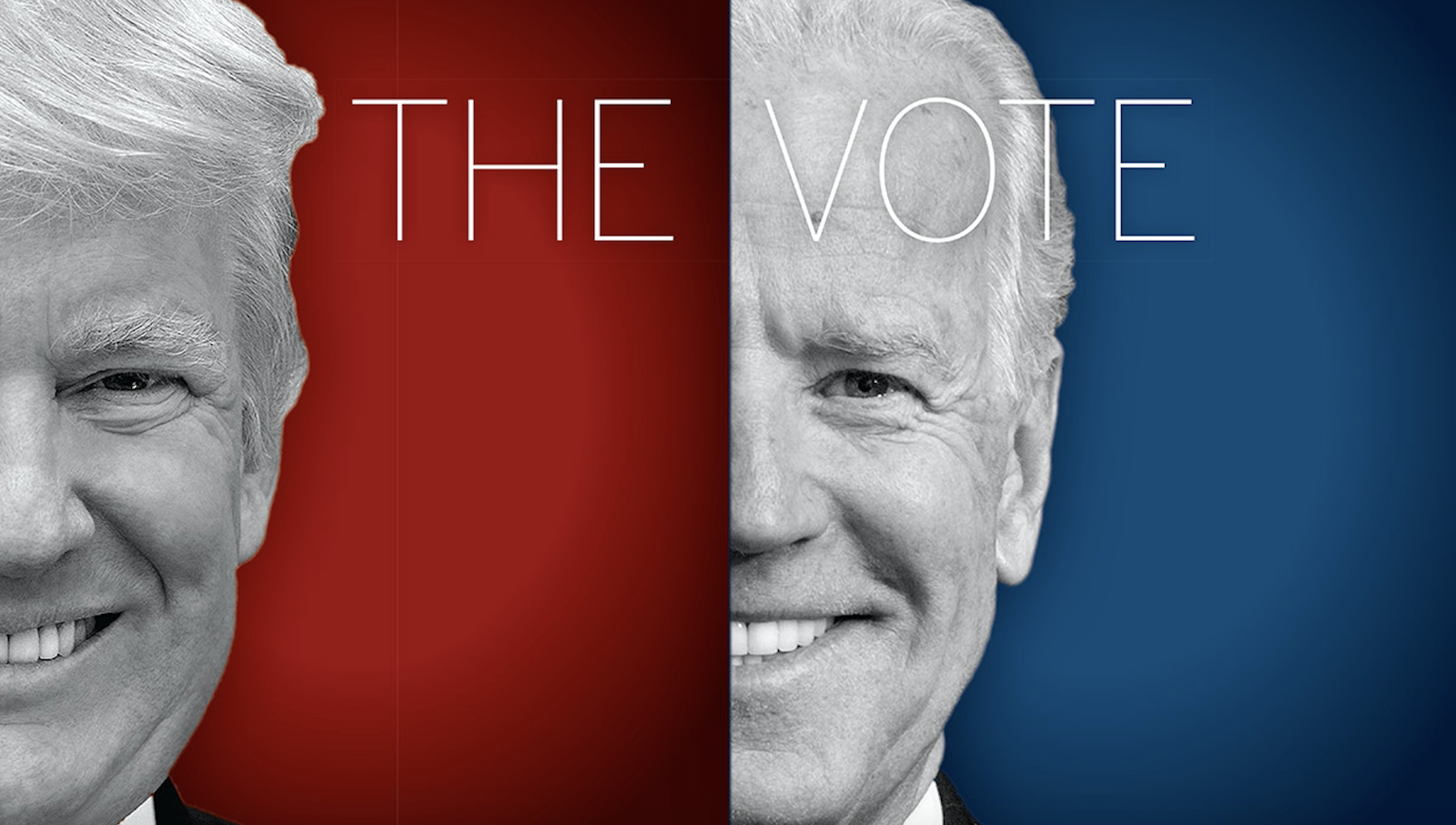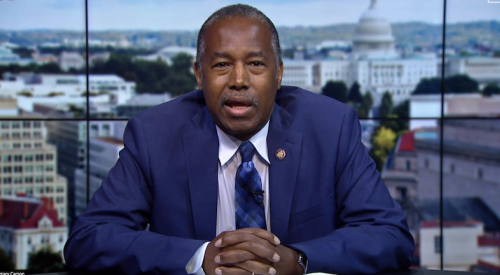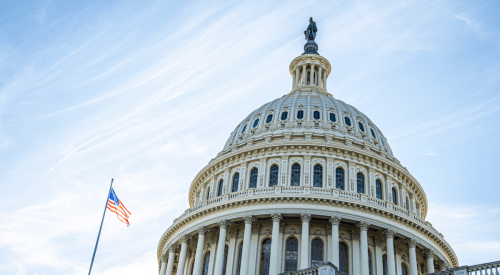Do presidential elections really impact housing? Normally, not so much, says Jody Kahn, SVP of research at John Burns Real Estate Consulting, which provides independent research and consulting services related to the U.S. housing industry. But with political, social, and economic turmoil peaking this summer, Kahn says it’s more difficult to gauge how housing issues may fare under either the incumbent Donald Trump or his rival, Joe Biden, after the votes are counted in the 2020 election.
For homebuyers, it will come down to confidence in the job market and hiring prospects, says Brad Hunter, president of housing market analysts Hunter Housing Economics, in West Palm Beach, Fla. For builders, taxation and regulatory issues are key concerns in the 2020 election, he says—both of which were addressed during President Trump’s first term in ways that favored housing.
But Hunter also wonders how many builders now see a second Trump term as possibly counterproductive to their interests on matters such as the national debt and trade ... a speculation fueled in part by the National Association of Home Builders’ 2018 estimate that tariffs on imported softwood lumber imposed by the Trump administration added, on average, $9,000 to a home’s cost—tariffs that continue to contribute to price spikes.
Alex Carrick, chief economist with the contractor network ConstructConnect, adds that Trump’s anti-immigration policies have largely stalled the country’s population growth, one of the housing market’s principal drivers. “Democrats would be more open to immigration, especially foreign workers and students,” he says. And, perhaps, an influx of skilled construction labor may also help close the housing supply gap.
With so many factors likely to sway voters in the 2020 election—led by a lingering lethal virus and its impact on the U.S. and global economies, and social unrest over racial inequity—one thing seems clear: A second Trump term would be vastly different from a Biden presidency in its approach to housing.
Issue 1: Deregulation
Many of the same housing-related issues that were planks of the Republican and Democratic platforms in the 2016 election are being nailed down again during the 2020 election cycle, and deregulation tops that list.
For Republicans, then and now, it’s about minimizing government involvement in the housing industry to achieve greater access and affordability. To that end, Trump signed an executive order on June 25, 2019, establishing a White House Council on eliminating barriers to affordable housing development. In announcing the council, the White House reiterated NAHB’s estimate that at least 25% of a new home’s cost can be attributed to regulations that also contribute to the shortage of affordable homes.
Trump is hoping his administration’s strong economy, which buoyed the housing industry and enabled its resiliency during the current health crisis, will counter the downward spiral of key indicators, such as employment and gross domestic product, affecting the overall economy from the COVID-19 pandemic.
“Trump has been doing an outstanding job for the housing industry,” says Jerry Howard, NAHB’s CEO. “We saw consistent growth during his first three years.” NAHB has tracked Trump’s housing-related achievements, mostly through executive orders, which reduced or eliminated regulations the NAHB deemed detrimental to new-home construction or sales.
RELATED
- Builders Saw Policy Wins in 2019, But There's More Work Ahead
- NAHB and Trump Working to Reopen the Country
- It's Time for Congress to Act on Finance Reform
- Is There a Connection Between Political Party and Housing Market Activity?
The highlights of those orders include the repeal and replacement of the Obama-era Waters of the United States rule; a reworking of the Clean Power Rule, which deemed rigorous energy codes a threat to housing affordability; the creation of opportunity zones; and streamlining federal environmental review and permitting processes for building roads, bridges, and infrastructure upon which all home builders and developers rely, Howard says. If Trump is re-elected, Howard thinks his second term should focus more on housing affordability via deregulation, with a particular eye toward helping first-time buyers through income tax credits for homeownership—a policy favored by NAHB.
Looking ahead, analysis of Trump’s fiscal year 2021 budget request by nonprofit research and advocacy organization National Low Income Housing Coalition notes that the budget calls for cutting the U.S. Department of Housing and Urban Development’s funding by $8.6 billion, or 15% below enacted 2020 levels. The president’s plan also eliminates the national Housing Trust Fund and reduces public housing operating funds by 21%. The request also proposes an initiative to reduce “street homelessness.”
Issue 2: Spending
In the 2016 election, the Democratic Party’s housing platform focused on increasing the supply of affordable housing, preventing predatory lending, and expanding Community Block Grants. This summer, candidate Biden doubled down with several bold investment initiatives that, if enacted, would open the federal government’s wallet as rarely before.
Biden’s plan to invest $640 billion over 10 years “so every American has access to housing that is affordable, stable, safe and healthy, accessible, energy efficient, and resilient” includes establishing a $100 billion Affordable Housing Fund and adding $20 billion to the Housing Trust Fund that Trump seeks to eliminate.
Biden also proposes $65 billion for state incentives and the Indian Housing Block Grant Program to construct or rehab low-cost and efficient housing in areas where it’s in short supply, investing $10 billion to make homes more energy efficient, and $5 billion to increase the amount of affordable housing stock. It’s a spending package that “intrigues” the NAHB, Howard says.
Democrats also see an opening to counter Trump’s failure to launch a much-ballyhooed infrastructure investment initiative. The Hill reported that Biden’s $1.3 trillion infrastructure plan includes $300 billion for new-home construction that would add 1.5 million homes and public housing units.
(Similarly, House Democrats recently proposed measures in their $1.5 trillion infrastructure bill that would invest $100 billion for affordable housing infrastructure “to create and preserve 1.8 million affordable homes,” and $40 billion for wastewater infrastructure.)
Biden also wants to create a new, refundable, advanceable tax credit of up to $15,000 to help families buy their first homes and build equity.
Other Biden initiatives that could affect housing include his plan to spend $2 trillion over four years to tackle climate change by escalating the use of cleaner energy sources. This is the second plank of Biden’s economic recovery plan, which emphasizes “buy American” and “hire American,” and aspires to create 5 million manufacturing and innovation jobs.
Howard says NAHB and its members need to get more details about how Biden intends to pay for all of this investment. Biden has stated that he would increase taxes on corporations and high-income individuals—the two primary beneficiaries of Trump’s signature Tax Cuts and Jobs Act of 2017—and roll back tax abatements on real estate investment.
Some conservatives have labeled Biden a captive to his party’s “radical socialist” wing, including their calls for increasing taxes. But Hunter predicts that Biden, as president, would “go slowly“ and be judicious in executing his plans, especially if the economy is still shaky.
Issue 3: Fair Housing and Suburbia
The 2020 U.S. presidential election could come down to which candidate women voters living in suburban America feel most comfortable supporting.
President Trump indicated as much when, in late June, he tweeted his intention to “end” a 2015 Obama administration initiative known as Affirmatively Furthering Fair Housing (AFFH). That rule requires local governments and their zoning boards seeking HUD funding to fill out a 92-question form detailing how they would address racial disparities. “I am happy to inform all of the people living their Suburban Lifestyle Dream,” read Trump’s July 29 tweet, “that you will no longer be bothered or financially hurt by having low income housing built in your neighborhood.”
Trump’s progressive critics, though, saw this rule change as little more than a way to shore up the president’s white, suburban voter base, which polls showed was eroding, especially among college-educated and working-class women.
RELATED
- The Housing Supply Issue Is Only Getting Worse
- New-Home Listings Drop as Construction Hurdles Limit Builders
- Small Metro Suburbs Are Only Region Seeing Quarterly Gains
- Where the Buyers Are (Moving To and Leaving)
- Suburban Shift for Home Building in Q2 2020
Even some supporters took Trump to task for the tweet. In an unusual (and largely unexpected) move, the NAHB quickly issued a statement labeling the tweet “an uncalled-for line of attack,” stating that the association “supports the intent of AFFH ... and the creation of affordable housing wherever it’s needed, including suburban areas,” while acknowledging problems with AFFH’s implementation.
Never mind that AFFH has been entangled in lawsuits and that current HUD Secretary Ben Carson all but shut it down before it got started. In fact, last January, HUD proposed a replacement rule that broadens the definition of “fair housing” under which jurisdictions could comply with the Fair Housing Act by proposing just three concrete actions tied specifically to housing affordability and quality.
Still, Trump and his supporters have framed AFFH as evidence that the suburban way of life would be “abolished” if Biden were elected president, as the former vice president has stated he would enforce AFFH.
Issue 4: The COVID Factor
Carrick and Kahn both believe builders are looking for national leadership that can present a cohesive plan for shoring up the economy in the face of a virus that will likely still be around next January and beyond.
Regardless of who resides in the White House after the 2020 election, Hunter says COVID-19 has reinforced demand for single-family housing and has led to a migration to less-dense areas. Carrick acknowledges that Millennials are forming households in the suburbs, but he also sees a bit of wishful thinking among builders about pent-up demand. Kahn, on the other hand, envisions “a new urgent buyer” who gives builders reason to anticipate “a tremendous lift” in demand.
The housing industry, she says, can weather a mild recession, but the fear is that the economy will get worse. “Government policy can influence that.”
Housing’s Plank in the Platforms
As is customary, both the Republican and the Democratic national committees approved policy platforms ahead of their respective national conventions in August.
The GOP’s platform is unchanged from 2016 and includes a section on “Responsible Homeownership and Rental Opportunities,” among other references to the industry.
The Democrats’ 2020 platform includes a section on “Putting Homeownership in Reach and Guaranteeing Safe Housing for Every American,” (page 20) among 75 references to housing throughout the document.
In addition, Joe Biden provides his own housing policy initiatives on his campaign website; the Trump Campaign website does not.

FIND OUT MORE
- LISTEN: Post-convention podcast with NAHB CEO Jerry Howard and NAHB’s EVP and chief lobbyist James Tobin
- READ: Republican Platform Details
- READ: Democrats' Platform Details, and Joe Biden's vision for housing
Access a PDF of this article in Pro Builder's September/October 2020 digital edition













